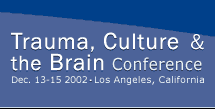Learning Not to Fear: The Medial Prefrontal Cortex and Extinction of Conditioned Fear
Following a traumatic event, most people undergo a transient period of fear and anxiety, but are able to return to normal functioning. PTSD sufferers, however, exhibit prolonged fear and anxiety reactions to reminders of the traumatic event long after danger as passed. One theory about PTSD patients is that they are unable to extinguish fear responses to stimuli that have been associated with the traumatic event through classical conditioning. Since Pavlov, we have known that extinction (repeated presentation of the CS without the US) does not erase the original conditioned association but is new learning. How does the brain learn not to fear? We use classical auditory fear conditioning, where rats learn to freeze to a tone that has been paired with footshock. Repeated presentation of the tone alone extinguishes freezing. Following initial reports of LeDoux and colleagues, we have shown that lesions of the medial prefrontal cortex (mPFC) prevent recall of extinction training after a 24-hr delay, suggesting that mPFC may consolidate or store extinction memory. Consistent with this, single neurons in the infralimbic subdivision of the mPFC are activated by tones only when rats are recalling extinction. Finally, stimulation of infralimbic cortex that mimics extinction-induced tone responses reduces freezing, effectively simulating extinction memory. Together with other findings, these data suggest that consolidation of fear extinction potentiates inputs to mPFC via an NMDA receptor-dependent mechanism, which suppresses fear via feed-forward inhibition of the amygdala. Potentiating mPFC either with stimulation or pharmacologically may form the basis of future therapies for PTSD.


